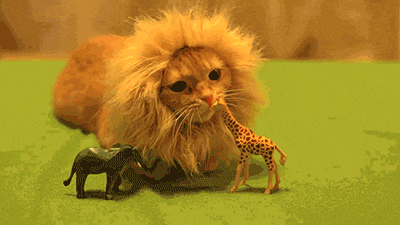|
2014-05-21 18:49
мЎ°нҡҢ: 11,559
추мІң: 10
мәҗлҰӯн„° н–үлҸҷмқ„ нҶөн•ҙ мң м Җмқҳ м„ұлі„ кө¬л¶„http://www.psypost.org/2014/05/can-you-tell-a-persons-gender-by-their-world-of-warcraft-game-avatar-24981
мҷҖмҡ°мҷҖ кҙҖл Ёлҗң мһ¬л°ҢлҠ” кё°мӮ¬кұ°лҰ¬к°Җ мһҲм–ҙм„ң лІҲм—ӯ. мӣ”л“ң мҳӨлёҢ мӣҢнҒ¬лһҳн”„нҠё кІҢмһ„ мәҗлҰӯн„°лҘј нҶөн•ҙ мң м Җмқҳ м„ұлі„мқ„ кө¬л¶„н• мҲҳ мһҲлӢӨ? Concordia, Colorado мЈјлҰҪ, Syracuse, Hofstra, Toronto лҢҖн•ҷм—җм„ң лӮЁм„ұ кІҢмһ„ мң м Җк°Җ м—¬мһҗ мәҗлҰӯн„°лҘј н”Ңл Ҳмқҙн• л•Ң лӮҳнғҖлӮҙлҠ” л°ҳмқ‘мқ„ мЎ°мӮ¬н•ҳмҳҖмҠөлӢҲлӢӨ. мӣ”л“ң мҳӨлёҢ мӣҢнҒ¬лһҳн”„нҠё 375лӘ…мқҳ н”Ңл Ҳмқҙм–ҙмқҳ н–үлҸҷнҢЁн„ҙмқ„ кё°лЎқн•ҳм—¬ 분м„қн•ҙліҙм•ҳлҠ”лҚ° м—¬м„ұмң м ҖмҷҖ лӮЁм„ұмң м Җмқҳ н–үлҸҷм°Ёмқҙк°Җ 분лӘ…н•ҳкІҢ лӮҳмҷ”мҠөлӢҲлӢӨ. 23%мқҳ лӮЁм„ұ мң м Җк°Җ м—¬м„ұмәҗлҰӯн„°лҘј м„ нғқн•ҳмҳҖкі , м—¬м„ұ н”Ңл Ҳмқҙм–ҙ мӨ‘ 7%к°Җ лӮЁм„ұ мәҗлҰӯн„°лҘј м„ нғқн•ҳмҳҖмҠөлӢҲлӢӨ. мқҙл“Өмқҳ кІҢмһ„н•ҳлҠ” мҳЁлқјмқём—җм„ңмқҳ мӣҖм§Ғмһ„, нҒҙлҰӯ, мұ„нҢ…лӮҙмҡ©мқ„ л…№нҷ”н•ҳмҳҖмҠөлӢҲлӢӨ. к°ҖмғҒ мәҗлҰӯн„°лҠ” н”Ңл Ҳмқҙм–ҙмқҳ мң лЁёк°җк°Ғмқ„, л¶ҲмҫҢк°җ, нҷңлҸҷ, к°җм •н‘ңнҳ„ к°ҷмқҖ м„ нҳёлҸ„ , мӣҖм§Ғмһ„, м–ём–ҙл“Өкіј к°ҷмқҖ мӢӨм ң мғқнҷңм—җм„ң лӮҳнғҖлӮј мҲҳ мһҲлҠ” м •мІҙм„ұмқ„ лӮҳнғҖлӮј мҲҳ мһҲлӢӨкі мҪҳкі л””м•„ көҗмҲҳлҠ” л§җн–ҲмҠөлӢҲлӢӨ. "мҡ°лҰ¬лҠ” мӢӨм ң м„ұлі„кіј лӢӨлҘё мәҗлҰӯн„°лҘј мЎ°мў…н•ҳлҠ” мң м Җл“Өмқҳ м–ём–ҙмқҳ мӮ¬мҡ©кіј мӣҖм§Ғмһ„мқ„ кҙҖм°°н•ҳм—¬ мӢӨм ң мң м Җмқҳ м„ұлі„мқ„ кө¬л¶„н• мҲҳ мһҲмқ„м§Җм—җ лҢҖн•ҙ м•Ңм•„ліҙкё°лЎң н•ҳмҳҖмҠөлӢҲлӢӨ" м—°кө¬мһҗл“ӨмқҖ м—¬м„ұ мәҗлҰӯн„°лҘј мЎ°мў…н•ҳлҠ” лӮЁм„ұ мң м Җл“Өмқҙ лӮЁм„ұ мәҗлҰӯн„°лҘј мЎ°мў…н•ҳлҠ” мӮ¬лһҢл“ӨліҙлӢӨ к°җм •м Ғмқё н‘ңнҳ„мқ„ лҚ” л§Һмқҙ мӮ¬мҡ©н•ҳкі , мқҙлӘЁнӢ°мҪҳмқ„ лҚ” л§Һмқҙ мӮ¬мҡ©н•Ёмқ„ л°ңкІ¬н•ҳмҳҖмҠөлӢҲлӢӨ. к·ёл“ӨмқҖ л¬јлЎ лҚ”мҡұ л§Өнҳ№м Ғмқё мҷёлӘЁлҘј м„ нғқн•ҳлҠ” нҺёмқҙм—Ҳкі мҡ”. к·ёлҰ¬кі м—¬м„ұ мәҗлҰӯн„°л“Өмқ„ мӣҖм§ҒмқҙлҠ” мң м Җл“Өмқҙ к·ёлЈ№м—җм„ң л–Ём–ҙм ё мӣҖм§ҒмқҙлҠ” кІҪн–Ҙмқ„ лӮҳнғҖлғҲмҠөлӢҲлӢӨ "мӣҖм§Ғмһ„мқҖ мұ„нҢ…ліҙлӢӨ л¬ҙмқҳмӢқм Ғмқё н–үлҸҷмқ„ лӮҳнғҖлӮҙкё°м—җ, мқҙ н–үлҸҷмқҖ мӢӨм ң м„ұлі„мқ„ кө¬л¶„н•ҳкё° мўӢмқ„ кұ°лқјкі л§җн• мҲҳ мһҲмҠөлӢҲлӢӨ." м—¬м„ұ мәҗлҰӯн„°лҘј мЎ°мў…н•ҳлҠ” лӮЁм„ұ мң м Җл“ӨмқҖ м—¬м„ұліҙлӢӨ нҸүк· 116л°° лҚ” л§ҺмқҖ м җн”„лҘј н•ҳмҳҖмҠөлӢҲлӢӨ. 추к°Җм ҒмңјлЎң л°ңкІ¬н•ң мӮ¬н•ӯмқҖ лӢӨмқҢкіј к°ҷмҠөлӢҲлӢӨ. - м„ұлі„мқҙ мӢӨм ңмҷҖ лӢӨлҘё н”Ңл ҲмқҙлҠ” м җн”„лҘј лҚ” л§Һмқҙ н•Ё - мҷңлғҗн•ҳл©ҙ лӮЁм„ұ мң м Җл“ӨмқҖ м—¬м„ұмәҗлҰӯн„°лҘј лҚ” 집мӨ‘л°ӣкІҢ н•ҳл Өкі нҳ№мқҖ м№ңм Ҳн•ң лҢҖмҡ°лҘј л°ӣкё° мң„н•ҙ. м җн”„лҠ” лҚ” л§ҺмқҖ кҙҖмӢ¬мқ„ л°ӣмқ„ мҲҳ мһҲлӢӨ. - м җн”„лҠ” м Ғкіј мӢёмҡ°лҠ” "мӢ¬к°Ғн•ң" мғҒнҷ©ліҙлӢӨ лҚ” мҳӨлқҪкұ°лҰ¬к°Җ лҗ©лӢҲлӢӨ. л№ҲлІҲн•ң м җн”„лҠ” кІҢмһ„м—җм„ң лҚң мӢ¬к°Ғн•ң м—ӯн• мқ„ н•ң кІғмқ„ мқҳлҜё к¶Ғк·№м ҒмңјлЎң мқҙ м—°кө¬лҠ” м„ұлі„мқҙ кІҢмһ„м—җм„ң лӮҳнғҖлӮҙлҠ” нҳ„мғҒмқ„ ліҙм—¬мЈјм—ҲмҠөлӢҲлӢӨ. "мҡ°лҰ¬мқҳ л°ңкІ¬мқҖ 비лЎқ м„ұлі„мқҙ мӮ¬нҡҢмқҳ к°•л Ҙн•ң м—°кІ°кі лҰ¬мқјм§ҖлқјлҸ„ лӢӨм–‘н•ң лІ”мң„мқҳ н–үлҸҷнҢЁн„ҙмқҙ нҢЁлҜёлӢҲмҠӨнҠё мқҙлЎ мқ„ м§Җм§Җн•ҳлҠ” к·јкұ°к°Җ лҗ мҲҳ мһҲмҠөлӢҲлӢӨ." лқјкі мҪҳмӮҙл°”лҸ„лҠ” лҢҖлӢөн–ҲмҠөлӢҲлӢӨ. лӮЁмһҗл“ӨмқҖ мһҗмӢ мқҳ мӢӨм ң м„ұлі„мқ„ м—¬м„ұ мәҗлҰӯн„°лҘј нҶөн•ҙ мҲЁкёё н•„мҡ”лҠ” м—Ҷм§Җл§Ң, мҡ°лҰ¬мқҳ м—°кө¬лҠ” м—¬м„ұмҠӨлҹ¬мҡҙ н–үлҸҷкіј мқҳмӮ¬мҶҢнҶө к°ңл…җмқҳ нҷ•лҰҪмқ„ к°•нҷ”мӢңмј°мҠөлӢҲлӢӨ. Can you tell a personвҖҷs gender by their вҖҳWorld of WarcraftвҖҷ game avatar?A sexy wood elf with pointy ears. A hulking ogre with blue skin. An intimidating heroine with a buxom breastplate. When it comes to computer games, players can choose to be anyone or anything. But gamers donвҖҷt always mask their true identities with online avatars. According to a new study by researchers at Concordia University, Colorado State University, Syracuse University, Hofstra University and the University of Toronto, a male gamer who chooses to play as a female character will still display signs of his true gender. In the study, which was recently published in Information, Communication and Society, researchers examined the online behaviour of 375 participants as they played a custom-built quest in World of Warcraft — a massive multi-player game set in a fantasy world where players battle warlords, dragons, demons and each other to gain strength and abilities. The investigatorsвҖҷ goal? To see if gender differences in online behaviour align with the offline social norms that govern вҖңappropriateвҖқ behaviour for men and women. Twenty-three per cent of the studyвҖҷs male participants chose avatars of the opposite gender, and seven per cent of its female participants did the same. As they played, their online movement, chat and clicks on interactive objects were recorded. вҖңAvatars can convey a playerвҖҷs sense of humour, displeasure, intrigue and interest through cues like gestures, movement and language, which can reveal real-life identity,вҖқ says Mia Consalvo, one of the studyвҖҷs authors and a professor in ConcordiaвҖҷs Department of Communication Studies. вҖңWe looked at things like language use and online movement to see if, among those who played a character of the opposite gender, a playerвҖҷs real-life gender would be revealed.вҖқ The researchers found that male gamers with female avatars used more emotional phrases and employed smile emoticons more often than those with male avatars. They were also more likely to choose an attractive avatar. It was with respect to movement that the male gamers with female avatars ultimately gave themselves away: they moved backwards more often and stayed further away from the group than women playing with female avatars. вҖңMovement is less conscious than chat, so it can be an easier вҖҳtellвҖҷ for offline gender,вҖқ says Consalvo, who also holds a Canada Research Chair in Game Studies and Design. Men playing with a female avatar also jumped an average of 116 more times than their female counterparts. There could be a number of reasons for this seemingly odd finding:
Ultimately, the study has implications for gender theorists and gamers alike. вҖңOur findings support feminist theories suggesting that although gender is a powerful social category, there is a range of ways it can be performed,вҖқ Consalvo says. вҖңMen may not necessarily try to mask their offline gender when they use a female avatar, but our study shows they do reinforce idealized notions of feminine appearance and communication.вҖқ
EXP
1,772,558
(65%)
/ 1,872,001
|
|
|









 лІ—л°”
лІ—л°” 


